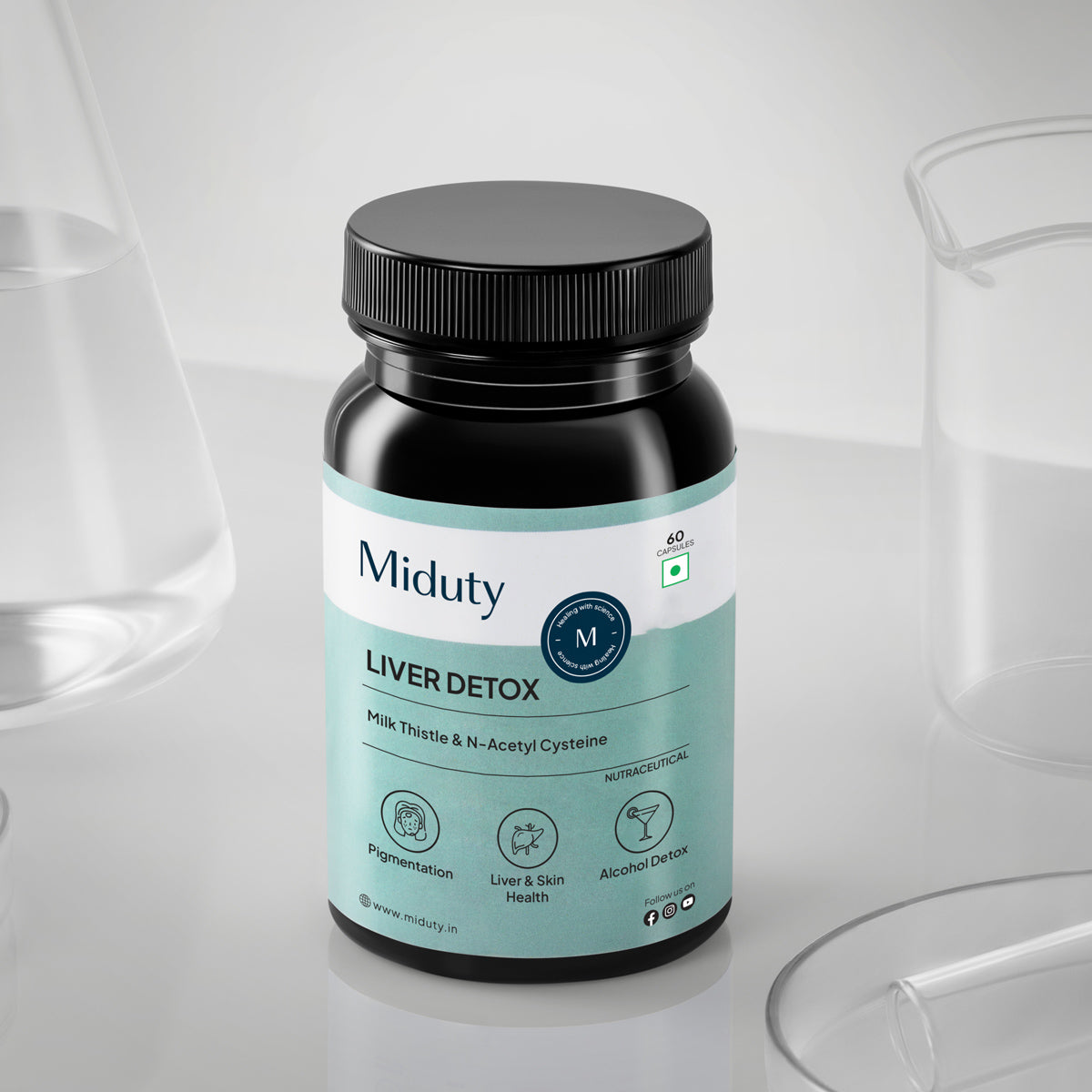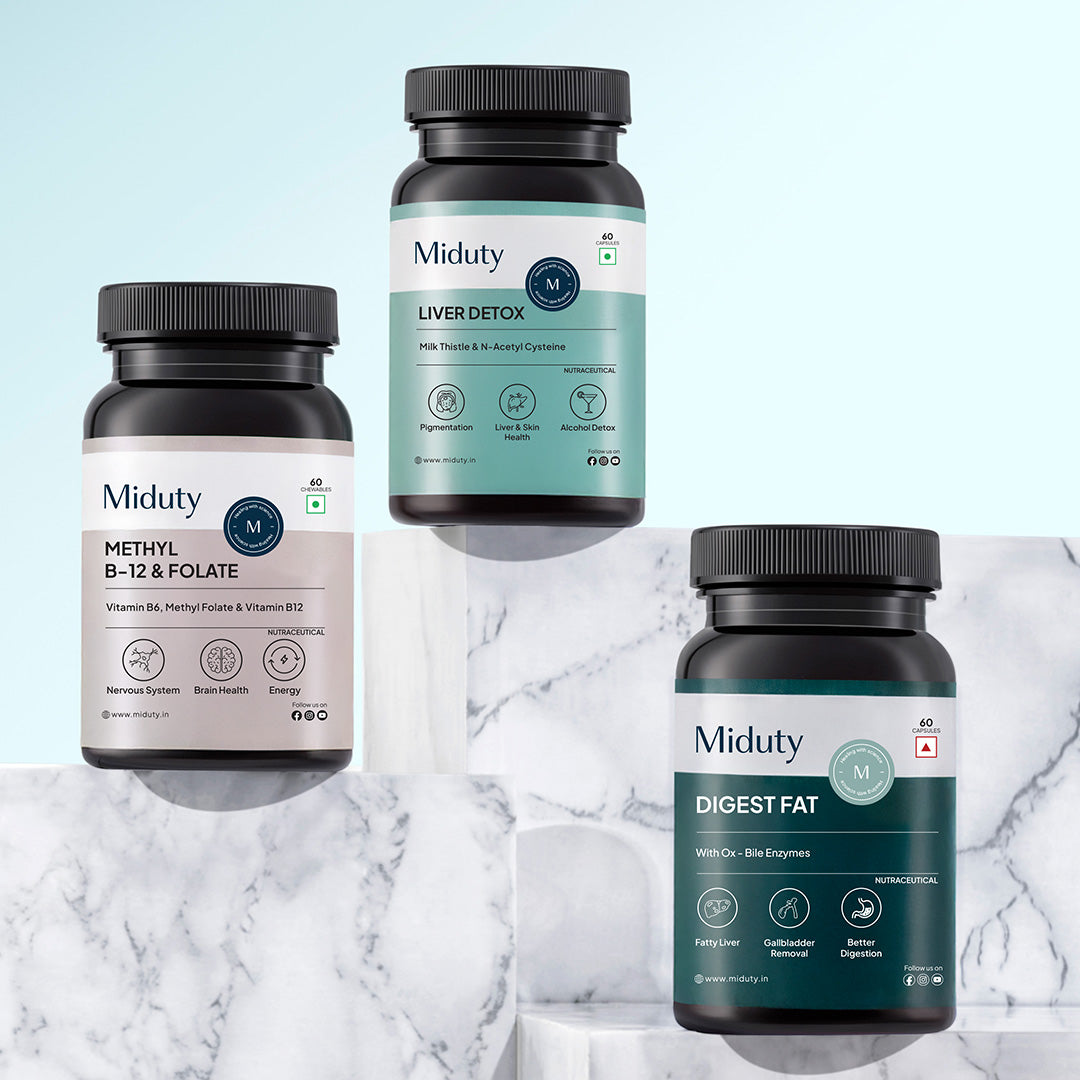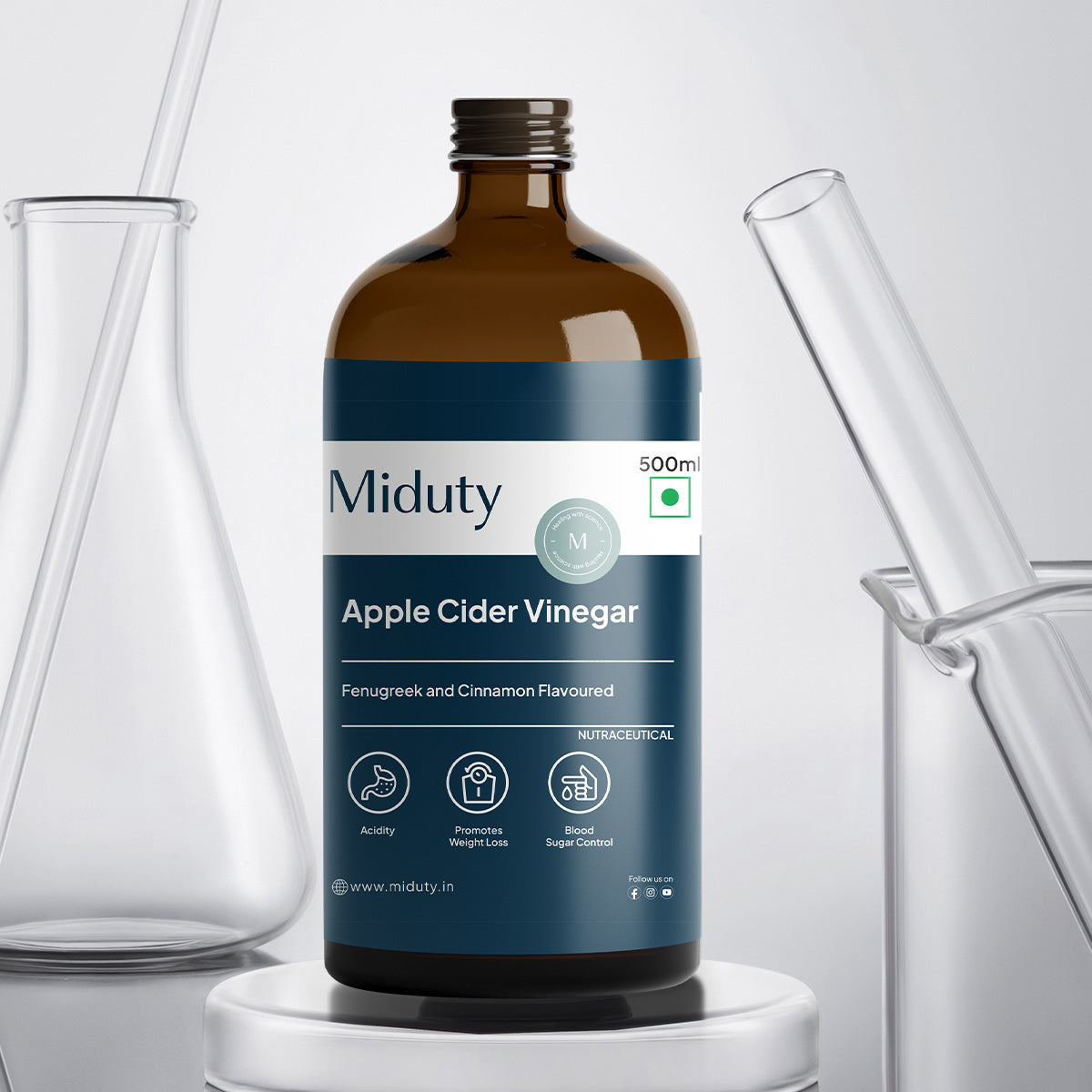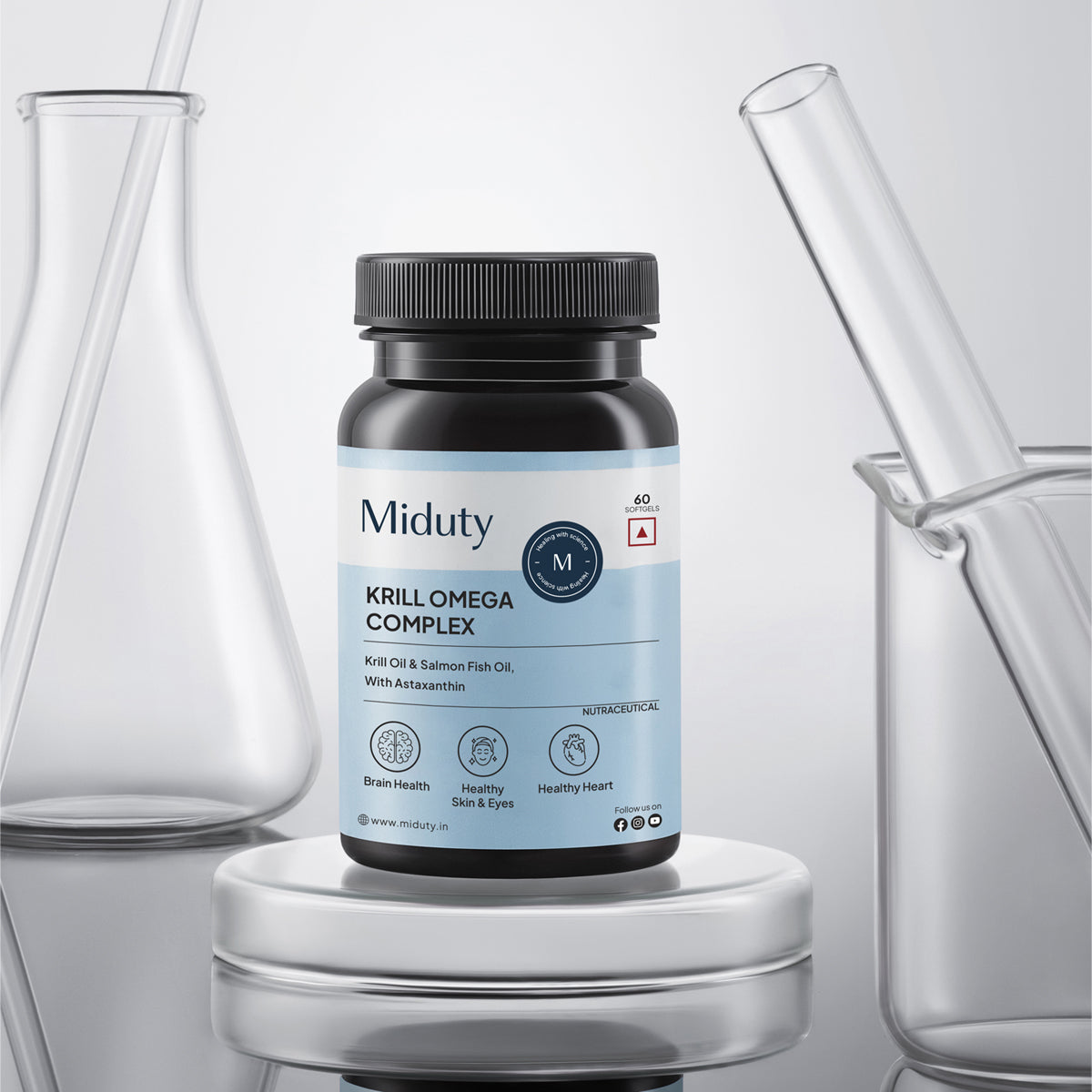
What is Fatty Infiltration of the Liver? Causes, Risks, and Preventive Measures
Think of your liver as a sponge designed to filter toxins, break down fats, and manage energy. Now imagine that sponge slowly getting clogged with grease. That's fatty infiltration in a nutshell, fat begins accumulating in liver cells, disrupting their function. This condition isn't reserved just for heavy drinkers. Non-alcoholic fatty liver disease (NAFLD) is alarmingly common among those who drink little to no alcohol.
In fact, it's closely tied to lifestyle factors like obesity, poor diet, and lack of physical activity. But don't worry, there's a lot you can do to understand, prevent, and even reverse the damage if caught early. In this guide, we'll take you on a deep dive into every aspect of fatty liver disease, from its subtle symptoms to its more serious complications. So, buckle up and let's get into it.
Key Takeaways
1. Keep Your Liver Fat-Free: Your liver works like a sponge, and excess fat clogs its function. Don't let it silently shut down your body's engine.
2. Not Just an Alcohol Problem: NAFLD affects non-drinkers too mostly due to poor diet, obesity, and inactivity.
3. Watch for Subtle Symptoms: Fatigue, abdominal discomfort, or weight loss could signal a fatty liver. Don't ignore the early warnings.
4. Prevention is Simple: A healthier diet, more movement, and less sugar can stop fatty liver before it starts.
5. Boost with Smart Supplements: NAC and milk thistle support liver detox and healing especially when paired with lifestyle changes.
What is Fatty Infiltration of the Liver?
Fatty infiltration of the liver refers to a condition where excess fat accumulates within the liver cells. Medically known as hepatic steatosis, this condition can occur in individuals with or without a history of alcohol use. While a small amount of fat in the liver is considered normal, problems arise when fat content exceeds 5% to 10% of the liver's total weight. When this threshold is crossed, liver function begins to deteriorate.
Imagine your liver as a busy kitchen. It processes nutrients, filters toxins, and produces bile. When too much fat clogs up the kitchen, everything starts to slow down. The liver becomes inflamed and vulnerable to injury, which can eventually lead to scarring (fibrosis) or even complete liver failure.
Fatty liver disease can be reversible in its early stages, particularly with lifestyle changes. But once the liver becomes severely scarred, reversing the damage becomes significantly harder. That's why understanding this condition early on is so important—it's not just about liver health, but overall health.
What is Grade 1 Fatty Infiltration of Liver?
Grade 1 fatty liver, or mild hepatic steatosis, is the earliest stage of fat buildup in liver cells. Often caused by poor diet, obesity, or insulin resistance, it's usually symptomless and reversible. Lifestyle changes like a healthy diet, exercise, and avoiding alcohol can prevent progression to severe liver damage.
Types of Fatty Liver Disease
There are primarily two types of fatty liver disease:
1. Alcoholic Fatty Liver Disease (AFLD): Caused by heavy alcohol consumption, this form of fatty liver is directly linked to the toxic effects of alcohol on liver cells. Excessive drinking leads to fat build-up, inflammation, and eventually liver scarring.
2. Non-Alcoholic Fatty Liver Disease (NAFLD): This form is not linked to alcohol intake and is more commonly associated with metabolic syndrome, obesity, insulin resistance, and high cholesterol levels. NAFLD has become a global health concern due to the rise in sedentary lifestyles and poor dietary habits.
NAFLD can further progress into Non-Alcoholic Steatohepatitis (NASH), where fat accumulation is accompanied by inflammation and liver cell damage. Over time, this can result in fibrosis, cirrhosis, or liver cancer.
There's also a rare genetic form of fatty liver known as familial hyperlipidemia, which causes fat to build up in the liver due to inherited disorders in fat metabolism. Understanding the type of fatty liver disease is crucial, as it guides treatment options and helps determine the risk of long-term complications.
Causes and Risk Factors
1. Lifestyle and Dietary Habits
A poor diet and lack of exercise are the primary drivers behind fatty liver disease. Consuming high amounts of sugary foods, refined carbs, and saturated fats—especially from processed junk—leads to excess fat storage in the liver. Pair that with a sedentary lifestyle, and the body's ability to burn fat slows down, causing it to accumulate in places it shouldn't, like your liver. Obesity, particularly belly fat, greatly increases your risk. Thankfully, healthier habits like regular exercise and a balanced diet can make a big difference.
2. Underlying Medical Conditions
Fatty liver is closely tied to several health conditions. Type 2 diabetes, high blood pressure, high cholesterol, and metabolic syndrome all increase your risk. Women with PCOS and individuals with underactive thyroid (hypothyroidism) are also more vulnerable. Some medications, such as corticosteroids or chemotherapy drugs, can trigger fat buildup too.
3. Genetic and Environmental Influences
Genetics play a surprising role in fatty liver. If your family has a history of liver disease or obesity, you might inherit a higher risk—even if you live a relatively healthy lifestyle. Environmental factors like long-term exposure to pollutants or toxic chemicals can also stress the liver, contributing to fat accumulation.
Symptoms and Early Warning Signs
Common Symptoms to Watch For
Fatty liver disease is notorious for being a silent condition in its early stages. Most people won't even know they have it until it shows up unexpectedly during routine blood work or imaging. But as the fat builds up and starts interfering with liver function, the signs begin to emerge—though often subtly.
The most common symptom? Fatigue. It's the kind that doesn't go away with rest. You may also feel a general sense of discomfort or dull pain in the upper right side of your abdomen, where your liver lives. As the condition progresses, you might notice unexplained weight loss, weakness, and even mild confusion.
Other symptoms can include:
- A feeling of fullness in the abdomen
- Poor appetite or nausea
- Dark-colored urine
- Yellowing of the skin or eyes (jaundice)
- Swelling in the legs and belly
Many of these signs can be brushed off or mistaken for other issues, which is why fatty liver disease often flies under the radar. If you're experiencing more than one of these symptoms and especially if you have risk factors like obesity or diabetes, it's time to take notice.
Diagnosis and Testing
Diagnosing fatty liver often starts with a review of your medical history and a physical exam. If there's concern, your doctor may order blood tests to check liver enzymes (ALT, AST), along with tests for cholesterol, blood sugar, and other liver function markers. Imaging tests like ultrasounds, CT scans, or MRIs help visualize fat accumulation.
A FibroScan may assess liver stiffness, indicating fibrosis. In uncertain or advanced cases, a liver biopsy provides a definitive diagnosis by analyzing liver tissue. These combined approaches help determine the severity of fat buildup and whether inflammation or scarring is present, guiding treatment decisions and ongoing monitoring.
Prevention Tips to Protect Your Liver
Protecting your liver doesn't require perfection—just a few consistent, smart changes can go a long way. Here's how to prevent fatty liver or stop it from getting worse:
1. Follow a Balanced, Anti-Inflammatory Diet
Instead of focusing only on "clean eating," aim for a balanced diet that reduces inflammation and supports liver function. Incorporate colorful vegetables, omega-3 rich fish, leafy greens, and anti-inflammatory herbs such as turmeric and ginger. Avoid crash diets and focus on sustainability, your liver thrives on consistency.
2. Cut Down on Sugar and Refined Carbohydrates
Excessive sugar, especially from soft drinks, candies, and processed snacks, is quickly converted to fat in the liver. Refined carbs like white bread and pastries spike insulin levels, encouraging fat storage. Replace them with complex carbs such as oats, legumes, and sweet potatoes to keep blood sugar stable and reduce liver fat.
3. Stay Physically Active
You don't need a gym membership to protect your liver—just 30 minutes of moderate activity five days a week can make a significant difference. Activities like brisk walking, biking, or swimming help burn excess fat and improve insulin sensitivity. Combine cardio with strength training for best results.
4. Monitor Your Metabolic Health
Keep track of your blood pressure, cholesterol, and blood sugar, especially if you have a family history of liver or heart disease. These factors often contribute to fatty liver and are easier to manage when caught early. Regular blood tests and check-ups ensure you're not overlooking hidden risks.
5. Use Liver-Supporting Supplements Wisely
Supplements like NAC and milk thistle can support liver detox and reduce inflammation, but they work best when paired with a healthy lifestyle. NAC boosts glutathione, your liver's primary antioxidant, while milk thistle helps protect liver cells from damage. Always consult a healthcare provider before starting new supplements.
Conclusion
Fatty infiltration of the liver is a growing concern, and many people don't realize they have it until damage is already underway. Though it often starts silently, it can compromise vital liver functions and overall health if ignored. The upside? It's manageable and even reversible when addressed early.
Simple lifestyle changes like eating well, staying active, and managing weight are your best defenses. When paired with targeted supplements like NAC and milk thistle, you can reduce liver fat, ease inflammation, and prevent serious complications. Don't wait for symptoms, take action now.
Protecting your liver means protecting your energy, clarity, and long-term health. Your liver works hard for you to give it the care it deserves.
Frequently Asked Questions on Fatty Infiltration of Liver -
Q1 - Is fatty infiltration of the liver serious?
Mild fatty infiltration isn't immediately dangerous but can become serious if left untreated, potentially progressing to liver inflammation, fibrosis, or cirrhosis.
Q2 - How do you treat fatty infiltration of the liver?
Treatment involves weight loss, a healthy diet, regular exercise, reducing sugar and alcohol intake, and managing conditions like diabetes or high cholesterol.
Q3 - What stage is fatty infiltration of the liver?
Fatty infiltration refers to the early stages of fatty liver disease, usually classified as Grade 1 to 3, depending on the extent of fat accumulation.
Q4 - What is stage 1 fatty liver?
Stage 1, or Grade 1 fatty liver, means a mild accumulation of fat in liver cells, typically without inflammation or scarring, and is reversible with lifestyle changes.
Q5 - What is Stage 2 fatty liver infiltration?
Stage 2 indicates a moderate fat buildup in the liver, which may begin to affect liver function and carry a higher risk of progressing to liver inflammation or fibrosis.
References













